Books by Albrecht Diem
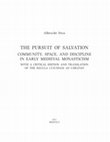
Turnhout: Brepols (Disciplina Monastica, vol. 13), 2021
This book is published with open access:
https://www.brepolsonline.net/action/showBook?doi=10.14... more This book is published with open access:
https://www.brepolsonline.net/action/showBook?doi=10.1484/M.DM-EB.5.120300
A history of the monastic pursuit of eternal salvation in the early medieval West, revolving around a seventh-century monastic rule for nuns, the Regula cuiusdam ad uirgines ("Someone’s Rule for Virgins")
The seventh-century Regula cuiusdam ad uirgines (Someone’s Rule for Virgins), which was most likely written by Jonas of Bobbio, the hagiographer of the Irish monk Columbanus, forms an ideal point of departure for writing a new history of the emergence of Western monasticism understood as a history of the individual and collective attempt to pursue eternal salvation.
The book provides a critical edition and translation of the Regula cuiusdam ad uirgines and a roadmap for such a new history revolving around various aspects of monastic discipline, such as the agency of the community, the role of enclosure, authority and obedience, space and boundaries, confession and penance, sleep and silence, excommunication and expulsion.
Table of Contents
Summary
The book consists of two sections. The first is a critical edition and translation of the Regula cuiusdam ad uirgines, a seventh-century Frankish monastic rule for nuns, along with the short treatise De accedendo ad Deum, which most likely formed a part of the Regula cuiusdam ad uirgines.
The second section is a study on the transformations and diversification of monastic theology, concepts of communal life and monastic discipline in the early medieval period. It revolves around the Regula cuisudam ad uirgines in its historical and intertextual context.
The study is divided four parts that are related to the four key words of the title of the book (Community, Space, Discipline, and Salvation). Each part consists of a chapter that makes an argument about the place of the Regula cuiusdam ad uirgines in intertextual contexts and a chapter that applies these arguments in a historical inquiry.
Introduction
Section I: Edition and Translation of the Regua cuiusdam ad uirgines
Section II: Study
Part I: Community
revolves around the question to what extent the monastic community can serve as an agent of the collective and individual pursuit of salvation
Chapter 1: Quidam pater – quaedam mater? The Regula cuiusdam ad uirgines and its author
provides a survey of the monastic milieu in which the Regula cuiusdam ad uirgines was written, discusses potential authors and stakeholders in the monastic foundation that may have been addressed by the Rule and shows on the basis of semantic and stylistic similarities and shared content and ideas that Jonas of Bobbio, the author of the Vita Columbani, is to be considered the author of the Regula cuiusdam ad uirgines as well.
Chapter 2: The dying nuns of Faremoutiers: the regula in action
argues that Jonas of Bobbio’s description of the deaths of the nuns of Faremoutiers, which is a part of Book 2 of his Vita Columbani, and the Regula cuiusdam ad uirgines represent the same monastic program, once presented as a "narrated rule", once as a normative text. The Faremoutiers episodes are closely modelled after Book 4 of the Dialogi of Gregory the Great and can be read as a critical response to Gregory’s eschatology and his notion of pursuing salvation by living a virtuous life. After having fleshed out the parallels and differences between the Dialogi and the Faremoutiers miracles, the chapter analyzes each episode of the Faremoutiers miracles, showing that Jonas wrote his monastic program in a highly sophisticated manner into stories describing the deaths occurring in the founding generation of nuns in Faremoutiers – deaths that were most likely still remembered by the primary audience of the Vita Columbani.
Part II: Space
discusses the role of space and boundaries for the monastic pursuit of salvation and explores the origins of the medieval cloister
Chapter 3 The Regula cuiusdam ad uirgines, a supplement to Caesarius’ Rule for Nuns?
compares the provisions of Caesarius of Arles’ Rule for Nuns with the Regula cuisudam ad uirgines and argues that Jonas wrote his Rule as an expansion and revision of Caesarius work: an "early medieval" update of a "late antique" monastic program, as it were.
Chapter 4: Enclosure re-opened: Caesarius, Jonas, and the invention of sacred space
discusses the evolution of Caesarius of Arles’ notion of enclosure as salvific instrument and then shows how Jonas of Bobbio tried to face the aporias of Caeasarius’ theology of enclosure by expanding it towards a system of total control of all physical, social and corporeal boundaries and the implementation of various enclosures.
Part III: Discipline provides a historical survey of the evolution of various aspects of monastic discipline in early medieval monastic rules leading to the Regula cuiusdam ad uirgines.
Chapter 5: The Regula Benedicti in seventh-century Francia
explores the role of the Regula Benedicti in Frankish monasticism in the aftermath of Columbanus and shows how Jonas used and revised the Regula Benedicti and refuted some of his main theological premises.
Chapter 6: The Regula cuiusdam ad uirgines and its context
describes the history of the topics addressed in each chapter of the Regula cuiusdam ad uirgines and provides a detailed commentary to the Rule itself, showing how Jonas rewrote the Regula Benedicti. I discuss every chapter of the Rule but put a special emphasis on the following topics: abbatial authority, hierarchy, boundaries, love, confession, silence, work, sleep, excommunication, and family ties.
Part IV: Salvation
focusses on the short treatise De accedendo ad Deum which provides a unique theological rationale why monastic discipline enables monks and nuns to pray effectively and to attain eternal salvation.
Chapter 7: De accedendo ad Deum – a lost chapter of the Regula cuiusdam ad uirgines?
shows that De accedendo was most likely a lost chapter of the Regula cuiusdam ad uirgines and thus written by Jonas of Bobbio as well.
Chapter 8: Prompto corde orandum: the theological program of De accedendo
analyzes the theological argument that monastic discipline enable a nun or monk to approach God through prayer, which forms one of the most sophisticated early medieval responses to the challenge of the doctrine of prevenient grace and the "semi-Pelagian" debate. De accedendo essentially explains how the monastic pursuit of salvation works.

This book is a study and German translation of three 7th-century monastic rules published after t... more This book is a study and German translation of three 7th-century monastic rules published after the time of Columbanus: the Regula cuiusdam patris, Regula cuiusdam ad virgines and the treatise De accedendo ad Deum. In the introduction I argue that all three texts assert different claims to define the heritage of the Irish monk and monastic founder Columbanus, and give different responses to the theological and practical challenges Columbanian monasticism faced after his death in 615. The Regula cuiusdam patris can be read as an angry polemic against the course Columbanian monasticism took, and might be associated with Agrestius, one of the antagonists of Columbanus’ successor Eusthasius of Luxeuil. The Regula cuiusdam ad virgines was probably written by Jonas of Bobbio as a counterpart to his Life of Columbanus. Both texts together form the program of Columbanian (or Hiberno-Frankish) monasticism as propagated by Jonas. De accedendo ad Deum may have originally been a chapter of the Regula cuiusdam ad virgines. As such it would form the theological core of the rule. The text provides a highly elaborate rationale for why and how monastic discipline enables a community to pray effectively for forgiveness of sins, to perform intercessory prayer and to attain salvation.
Edited Volume by Albrecht Diem
This volume brings together contributions of teachers, peers, friends and students of Janneke Raa... more This volume brings together contributions of teachers, peers, friends and students of Janneke Raaijmakers, who died in 2021 at age 48, to honour her life and academic accomplishments. Janneke Raaijmakers was an eminent early medieval scholar who studied the history of religious communities, the cult of saints, the veneration of relics and material culture particularly in the Carolingian world. Almost all chapters engage with different aspects of Janneke Raaijmakers’s research. The book is divided in four thematic sections: Saints, Relics, Community, and Memory.
Articles / Book chapters by Albrecht Diem

Saints, Relics and Communities in the Early Medieval World – In Memory of Janneke Raaijmakers, 2025
This chapter explores the interplay between theology and concepts of community in sixth-century G... more This chapter explores the interplay between theology and concepts of community in sixth-century Gaul – a post-Roman world that was in the process of inventing itself. The Codex Regularum, the most important collection of Latin monastic rules, which was compiled by Benedict of Aniane in the early ninth century as part of his efforts to promote the Regula Benedicti, contains a number of rules that were produced in southern Gaul more than three centuries earlier: the rules of Caesarius of Arles (d. 542), Aurelianus of Arles (d. 551), and Ferriolus of Uzès (d. ca 573), and the Regula Tarnantensis, all of which are intertextually tied together. Comparing them and reading them as programmatic and theological texts rather than simply as collections of monastic norms show that they form distinct contributions to a textual debate about the purpose of monastic life and the nature of monastic discipline. Each author had a different kind of monastery in mind when he wrote his rule. Caesarius emphasized in his Rule for Monks the necessity of perseverance in a life-long individual battle. His Rule for Nuns made the monastic space and strict enclosure of the community the main agents of salvation. Aurelianus defined monastic life as submission under a holy rule and the holy abbot/abbess. The author of the Regula Tarnantensis conceptualized the monas- tery as a house owned by God and turned the monks into a community of fearful slaves. Ferriolus understood monastic life as the implementation of the precepts of Christ and the Apostles (especially Paul) to the community of the first Christians.
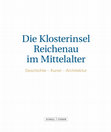
Die Klosterinsel Reichenau im Mittelalter: Geschichte – Kunst – Architektur, 2024
Please contact me if you are interested in this chapter: adiem@syr.edu.
Diem, Albrecht. "Regulie... more Please contact me if you are interested in this chapter: adiem@syr.edu.
Diem, Albrecht. "Regulierung des Lebens. Klosterregeln und Reform in der Reichenau in der Karolingerzeit." In Die Klosterinsel Reichenau im Mittelalter: Geschichte – Kunst – Architektur, edited by Wolfgang Zimmermann, Olaf Siart, Marvin Gedigk, and Claus Hattler, 46-57. Regensburg: Schnell und Steiner 2024.
The preserved 9th century manuscripts of the Reichenau monastery show various understandings of the Rule of Benedict and complicate our notion of the Reichenau as a »Benedictine« monastery. An early excerpt of the Rule may have been produced during a conflict about abbatial power. A collection of monastic rules implied an understanding of regula that encompasses various texts; two manuscripts of the Regula Benedicti turned the text into
an instrument of attaining eternal salvation, and an extensive commentary to the Rule showed the monks’ goal of reconciling the wording of the rule with the realities of Carolingian monasticism. A narrative text, the Visio Wettini, indicated that Carolingian monastic reform could also function entirely without invoking the Rule of Benedict.
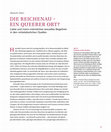
Welterbe des Mittelalters: 1300 Jahre Klosterinsel Reichenau - Begleitband, 2024
Please contact me if you are interested in this article: adiem@syr.edu
Diem, Albrecht. "Die Re... more Please contact me if you are interested in this article: adiem@syr.edu
Diem, Albrecht. "Die Reichenau - ein queerer Ort? Liebe und mann-männliches sexuelles Begehren in den mittelalterlichen Quellen." In Welterbe des Mittelalters: 1300 Jahre Klosterinsel Reichenau, edited by Claus Hattler, Marvin Gedigk, and Olaf Siart, 125-135. Regensburg: Schnell & Steiner, 2024.
A discussion whether we apply the term "queer" to the monastic community of Carolingian monastery Reichenau, based on the two versions of the Visio Wettini by Heito and Walahfrid Strabo, which address the alleged sexual transgression of Wetti, the leader of the monastic school in Reichenau; the Capitulare MIssorum Generale of 802, which contains one of the most extensive early medieval condemnations of sexual contacts among monks; and Hildemar of Corbie's Commentary to the Rule of Benedict from the middle of the 9th century, which develops an elaborate system of surveillance, especially of younger monks, aimed at preventing them from engaging in sexual acts.
The Pursuit of Salvation, 2021
Routledge Resources Online Medieval Studies, 2022
The contribution provides an outline of the development of restrictions of priestly marriage and ... more The contribution provides an outline of the development of restrictions of priestly marriage and prohibitions for priests to engage in sexual intercourse in acts of councils between the fourth and seventh centuries. It explains the rise of celibacyunderstood as abstaining from marriage as condition for priestly ordination-as product of a 'monasticization' of clerical life. Celibacy can be placed in four different frameworks, that of sexuality as symptom of human weakness, that of the ascetic strive against sexual temptation, of ritual purity, and of preventing priests from having legitimate offspring.
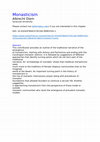
Routledge Resources Online Medieval Studies, 2022
This contribution provides an outline of the traditional narrative of the emergence of monasticis... more This contribution provides an outline of the traditional narrative of the emergence of monasticism, starting with Antony and Pachomius and ending with the Carolingian monastic reforms. It is followed by suggestions of different approaches that identify turning points which do not form part of the traditional narrative. An ‘archaeology of concepts’ shows that medieval monasticism owes much more to the traditions of female religious communities than to the imagined world of the desert. An important turning point in the history of monasticism is the rise of monastic intercessory prayer along with procedures of monastic foundations that allowed founders to continue a secular life. Another suggestion is approaching monasticism from the perspective of those inside or outside monastic communities who resist the emergence of prevalent monastic models.
Routledge Resources Online - Medieval Studies, 2022
See also my article 'The Limitations of Asceticism'. which provides more information (https://www... more See also my article 'The Limitations of Asceticism'. which provides more information (https://www.academia.edu/39728553/The_Limitations_of_Asceticism)
This contribution points to the problem that the term 'asceticism' has no proper definition and that it, if used uncritically, glosses over the diversity of radical religious practices in the late antique world and beyond. Asceticus is not a classical or medieval Latin term but the product of early modern attempts to provide monastic life with a convenient past. I provide a short history of the term 'asceticism' and a case study: the rendition of the Greek term askesis in the two Latin translations of Athanasius of Alexandria's Life of Antony.
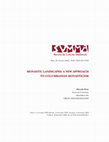
SVMMA. Revista de Cultures Medievals, 2022
This contribution proposes different notions of "monastic landscapes" (geographic, political, tex... more This contribution proposes different notions of "monastic landscapes" (geographic, political, textual, economic, spiritual) and discusses whether applying them to the monastic movement allegedly initiated by Columbanus may help us to refine or deconstruct the concept of "Columbanian monasticism." Comparing evidence on monastic life in Gregory of Tours' hagiographic and historiographic works with the depiction of monastic life in Jonas of Bobbio's Vita Columbani shows that we can indeed identify a shift from a "landscape with monasteries" in sixth-century Merovingian Francia to a politically integrated "monastic landscape" in the seventh century. However, this does not mean that the fundamental shift was necessarily the result of the activities of the Irish monk Columbanus. An investigation of Jonas' depiction of the spiritual and physical landscape around Columbanus' main foundation Luxeuil shows the grade of continuity between monastic foundations in Gaul before Columbanus and the alleged center of a new "Columbanian" monastic movement.
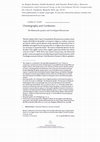
Monastic Communities and Canonical Clergy in the Carolingian World. Categorizing the Church, 2022
in: Rutger Kramer, Emilie Kurdziel, and Graeme Ward (eds.), Monastic Communities and Canonical Cl... more in: Rutger Kramer, Emilie Kurdziel, and Graeme Ward (eds.), Monastic Communities and Canonical Clergy in the Carolingian World. Categorizing the Church, Turnhout: Brepols 2022, pp. 59-97
The article analyzes the Memoriale qualiter, a early ninth-century customary that was disseminated in the context of the Carolingian monastic reforms. The work is a hybrid of two texts that were written independently from each other: an outline of daily liturgical activities outside the Hours that focusses on awakening, daily confessions, meals, and going to sleep, and a sequence of short precepts based on the Regula Benedicti. The first text contains various allusions to the seventh-century Regula cuiusdam ad uirgines and documents the impact of “Columbanian” monasticism on Carolingian reform discourse. It may originally have been written for a community of nuns and turned into a reform document afterwards.
The Memoriale qualiter argues that everything a member of a monastic community pertains to the opus dei and needs to be disciplined as such. This leads to a strict choreography of movements and bodily expressions, a strict discipline of one’s voice, and a procedure of permanent confession and mutual intercessory prayer – key ideas of the Regula cuiusdam ad uirgines. I compare the provisions on monastic confession in the Memoriale qualiter with other Carolingian texts on confession and show that neither the practice nor the scope and theology of confession has been unified and standardized in the Carolingian world.

Pakistan Journal of Historical Studies, 2020
Early Mediaeval monastic rules did not only provide outlines for organizing communities, behavio... more Early Mediaeval monastic rules did not only provide outlines for organizing communities, behavioural norms and disciplinary measures but also aimed at controlling, repressing, and fostering emotions. They developed distinct strategies of emotional discipline based on different notions of the nature of emotions and their impact on the pursuit of salvation. I compare the emotional disciplines of three monastic rules: the Rule of Benedict, which became the guiding norm of Mediaeval monastic life; Caesarius of Arles’ Rule for Nuns, the oldest monastic rule written for a female community; and the Regula cuiusdam ad virgines, which responded to Benedict’s and Caesarius’ rules. Benedict’s emotional discipline centered on instilling fear and love and focused on repressing emotions that were harmful to the community and on fostering the motivation to submit to monastic discipline. Caesarius is primarily focused on a permanent spatial separation from the outside world and expected that enclosure and submission to the Rule made negative emotions irrelevant. The author of the Regula cuiusdam ad virgines considered emotions, rather than acts, the ultimate benchmark for attaining salvation and developed a disciplinary program that combined elements of Caesarius’ and Benedict’s rules with an elaborate system of incitement, surveillance and constant disclosure.
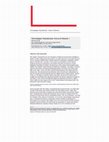
The Oxford Handbook of the Merovingian World, ed. by Bonnie Effros and Isabel Moreira, 2020
Diem, Albrecht, ‘Merovingian Monasticism: Voices of Dissent’, in: Bonnie Effros and Isabel Moreir... more Diem, Albrecht, ‘Merovingian Monasticism: Voices of Dissent’, in: Bonnie Effros and Isabel Moreira (eds.), The Oxford Handbook of the Merovingian World, Oxford: Oxford University Press 2020, pp. 320-343.
Please contact me if you are interested in this chapter: adiem@maxwell.syr.edu.
This chapter critically discusses the emergence of Western monasticism by identifying a number of silent turning points and instances of conflict that do not as yet play much of a role in a monastic narrative that is largely centered on individuals, institutions, and the impact of specific texts. I provide six case studies: the foundation of Saint-Maurice d’Agaune and the Jura monasteries; the transfer of the Rule of Caesarius to Queen Radegund’s foundation in Poitiers; the destruction of the column of the Frankish stylite Vulfilaic; the dramatic conflict between Brunhild and Columbanus; and Eligius of Noyon’s refusal to be buried in a monastery following his death. All of these case studies shed light on the silent, crucial, and often contested transformations that shaped medieval monasticism. They demonstrate how barbarian rulers and aristocrats appropriated options for living an ideal Christian life that were deeply rooted in Roman culture. They describe, too, the impact of monastic ideals on lay ethics, the process by which ascetic struggle was transformed into regularized monastic life and how monasteries became sacred spaces. None of these developments happened organically and without conflicts. These conflicts provide unique access to the “Transformation of the Roman World,” far beyond the scope of monastic studies.
https://www.oxfordhandbooks.com/view/10.1093/oxfordhb/9780190234188.001.0001/oxfordhb-9780190234188-e-8?rskey=clDZkN&result=1
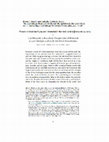
The Cambridge History of Medieval Monasticism in the Latin West, 2020
Albrecht Diem and Claudia Rapp, ‘The Monastic Laboratory: Perspectives of Research in Late Antiqu... more Albrecht Diem and Claudia Rapp, ‘The Monastic Laboratory: Perspectives of Research in Late Antique and Early Medieval Monasticism’, in: Alison Beach and Isabelle Cochelin (eds.), The Cambridge History of Medieval Monasticism in the Latin West, vol. 1, Cambridge: Cambridge University Press 2020, pp. 19-39.
Please contact me if you are interested in this text: adiem@maxwell.syr.edu
This chapter provides a roadmap for new approaches to the history of early medieval monasticism (or rather of monasticisms) beyond the traditional narrative that starts in the Egyptian desert and culminates in the Carolingian monastic reforms in the West or the foundation of the Great Lavra in the East.
Instead of assuming that the late antique world created a largely stable monastic ideal revolving around a dichotomy of eremitic and coenobitic monasticism and the imperative of a vita regularis, monasticism should be viewed as a long-term experiment to shape ideal religious communities. These communities faced the challenge to develop a theological basis that did not cross doctrinal boundaries and to shape internal structures, disciplinary systems and economic models that allowed them to function perpetually and to gain them a place and role within the changing societal structures of the late antique and post-Roman world.
The result of these experiments was a broad diversity of often competing forms of communal life. Most sources establish a rhetoric of harmony, uniformity and organic development that conceals frictions and conflicts among monastic communities and between monasteries and the surrounding world. This means that our sources need to be read against the grain, identifying their agency in creating invented traditions and master narratives still powerful today and using them for a rigorous “archaeology of concepts”. Such an approach opens the ‘monastic laboratory’ to interdisciplinary approaches and invites various disciplines outside of history and theology to explore the monastic experiment.
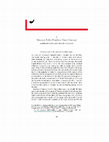
The Cambridge History of Medieval Monasticism in the Latin West, 2020
Albrecht Diem and Philip Rousseau, ‘Monastic Rules (Fourth to Ninth Century)’, in: Alison I. Beac... more Albrecht Diem and Philip Rousseau, ‘Monastic Rules (Fourth to Ninth Century)’, in: Alison I. Beach and Isabelle Cochelin (eds.), The Cambridge History of Medieval Monasticism in the Latin West, vol. 1, Cambridge: Cambridge University Press 2020, pp. 162-194
This chapter describes the emergence and transformations of regular observance between the period of the desert fathers and Carolingian monastic reforms. We argue that the concept of monastic life as vita regularis has largely been shaped by Benedict of Aniane as part of his attempt to turn the Rule of Benedict into the guiding norm of monastic life. Regular observance is by no means a stable feature of late antique early medieval monasticism but it manifests itself in various forms and has a long and complicated history. Aside from providing an outline of this history we make suggestions how to approach the corpus of rightly thirty preserved monastic rules beyond a purely normative understanding.
Please contact me (adiem@maxwell.syr.edu) if you are interested in this chapter.
Online access: https://www.cambridge.org/core/books/cambridge-history-of-medieval-monasticism-in-the-latin-west/CA06292ED392F1DC44FBF0C6AF708452
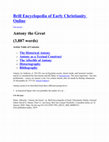
in: David Hunter, Paul van Geest and Bert Jan Lietaert Peerbolte (eds.), Brill Encyclopedia of Early Christianity online, Leiden: Brill, 2019
Antony (or Anthony; d. 356 CE) was an Egyptian ascetic, desert monk, and monastic teacher, and he... more Antony (or Anthony; d. 356 CE) was an Egyptian ascetic, desert monk, and monastic teacher, and he is considered the first hermit and the father of monasticism. The most important – but also problematic – source on Antony is his Vita written shortly after his death by Bishop Athanasius of Alexandria (d. 373 CE; Desert Fathers).
Antony needs to be described from three different perspectives:
1. as historical figure who was probably the author of a series of letters that are preserved under his name;
2. as textual creation in Athanasius’ Vita Antonii and other sources, particularly the collections of Apophthegmata patrum, Jerome’s hagiographical works, and the monastic Historiae;
3. as late antique and medieval imagination: the first monk and Egyptian founding father of eremitic monasticism, a new type of saint for whom ascetic discipline takes the place of martyrdom, and a model for ascetic life.
This article is under copyright. If you are interested in the text, please contact me (adiem@maxwell.syr.edu).
in: Samantha Herrick (ed.), Hagiography and the History of Latin Christendom, 500-1500, Leiden: Brill, 2019
This chapter explores the use of hagiographic texts as 'Vitae vel regulae', i.e. as narrated mona... more This chapter explores the use of hagiographic texts as 'Vitae vel regulae', i.e. as narrated monastic rules and monastic programs. It focuses especially on the Life of Antony, the Life of Martin, the Life of the Jura Fathers, the Life of Pacomius and Walahfrid Strabo's Life of Gallus and explores the different textual strategies to convey monastic ideals and the different concepts of normativity and regular observance developed in these texts.
‘Vita vel Regula: Multifunctional Hagiography in the Early Middle Ages’, in: Samantha Herrick (ed.), Hagiography and the History of Latin Christendom, 500-1500, Leiden: Brill 2019, pp. 123-142.
in: Sylvie Joye, Cristina La Rocca, and Stéphane Gioanni (ed.), La construction sociale du sujet exclu (IVe-XIe siècle). Discours, lieux et individus, Turnhout: Brepols 2019 (Collection Haut Moyen Âge, vol. 33), pp. 123-147., 2019
This article contrasts the rhetoric of accessibility to monastic conversion as we can find it in... more This article contrasts the rhetoric of accessibility to monastic conversion as we can find it in late antique and early medieval narrative texts with practices of exclusion from monastic entry, especially for slaves and unfree people, priests, monks form other monasteries and the poor as it is laid out in monastic rules and other normative texts. It especially focuses on rituals of access to the monastery and techniques of exclusion in the ninth-century commentary to the Regula Benedicti by Hildemar of Corbie.


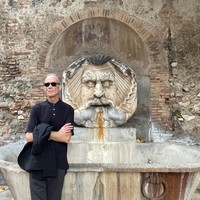





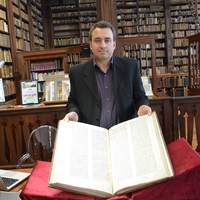

Uploads
Books by Albrecht Diem
https://www.brepolsonline.net/action/showBook?doi=10.1484/M.DM-EB.5.120300
A history of the monastic pursuit of eternal salvation in the early medieval West, revolving around a seventh-century monastic rule for nuns, the Regula cuiusdam ad uirgines ("Someone’s Rule for Virgins")
The seventh-century Regula cuiusdam ad uirgines (Someone’s Rule for Virgins), which was most likely written by Jonas of Bobbio, the hagiographer of the Irish monk Columbanus, forms an ideal point of departure for writing a new history of the emergence of Western monasticism understood as a history of the individual and collective attempt to pursue eternal salvation.
The book provides a critical edition and translation of the Regula cuiusdam ad uirgines and a roadmap for such a new history revolving around various aspects of monastic discipline, such as the agency of the community, the role of enclosure, authority and obedience, space and boundaries, confession and penance, sleep and silence, excommunication and expulsion.
Table of Contents
Summary
The book consists of two sections. The first is a critical edition and translation of the Regula cuiusdam ad uirgines, a seventh-century Frankish monastic rule for nuns, along with the short treatise De accedendo ad Deum, which most likely formed a part of the Regula cuiusdam ad uirgines.
The second section is a study on the transformations and diversification of monastic theology, concepts of communal life and monastic discipline in the early medieval period. It revolves around the Regula cuisudam ad uirgines in its historical and intertextual context.
The study is divided four parts that are related to the four key words of the title of the book (Community, Space, Discipline, and Salvation). Each part consists of a chapter that makes an argument about the place of the Regula cuiusdam ad uirgines in intertextual contexts and a chapter that applies these arguments in a historical inquiry.
Introduction
Section I: Edition and Translation of the Regua cuiusdam ad uirgines
Section II: Study
Part I: Community
revolves around the question to what extent the monastic community can serve as an agent of the collective and individual pursuit of salvation
Chapter 1: Quidam pater – quaedam mater? The Regula cuiusdam ad uirgines and its author
provides a survey of the monastic milieu in which the Regula cuiusdam ad uirgines was written, discusses potential authors and stakeholders in the monastic foundation that may have been addressed by the Rule and shows on the basis of semantic and stylistic similarities and shared content and ideas that Jonas of Bobbio, the author of the Vita Columbani, is to be considered the author of the Regula cuiusdam ad uirgines as well.
Chapter 2: The dying nuns of Faremoutiers: the regula in action
argues that Jonas of Bobbio’s description of the deaths of the nuns of Faremoutiers, which is a part of Book 2 of his Vita Columbani, and the Regula cuiusdam ad uirgines represent the same monastic program, once presented as a "narrated rule", once as a normative text. The Faremoutiers episodes are closely modelled after Book 4 of the Dialogi of Gregory the Great and can be read as a critical response to Gregory’s eschatology and his notion of pursuing salvation by living a virtuous life. After having fleshed out the parallels and differences between the Dialogi and the Faremoutiers miracles, the chapter analyzes each episode of the Faremoutiers miracles, showing that Jonas wrote his monastic program in a highly sophisticated manner into stories describing the deaths occurring in the founding generation of nuns in Faremoutiers – deaths that were most likely still remembered by the primary audience of the Vita Columbani.
Part II: Space
discusses the role of space and boundaries for the monastic pursuit of salvation and explores the origins of the medieval cloister
Chapter 3 The Regula cuiusdam ad uirgines, a supplement to Caesarius’ Rule for Nuns?
compares the provisions of Caesarius of Arles’ Rule for Nuns with the Regula cuisudam ad uirgines and argues that Jonas wrote his Rule as an expansion and revision of Caesarius work: an "early medieval" update of a "late antique" monastic program, as it were.
Chapter 4: Enclosure re-opened: Caesarius, Jonas, and the invention of sacred space
discusses the evolution of Caesarius of Arles’ notion of enclosure as salvific instrument and then shows how Jonas of Bobbio tried to face the aporias of Caeasarius’ theology of enclosure by expanding it towards a system of total control of all physical, social and corporeal boundaries and the implementation of various enclosures.
Part III: Discipline provides a historical survey of the evolution of various aspects of monastic discipline in early medieval monastic rules leading to the Regula cuiusdam ad uirgines.
Chapter 5: The Regula Benedicti in seventh-century Francia
explores the role of the Regula Benedicti in Frankish monasticism in the aftermath of Columbanus and shows how Jonas used and revised the Regula Benedicti and refuted some of his main theological premises.
Chapter 6: The Regula cuiusdam ad uirgines and its context
describes the history of the topics addressed in each chapter of the Regula cuiusdam ad uirgines and provides a detailed commentary to the Rule itself, showing how Jonas rewrote the Regula Benedicti. I discuss every chapter of the Rule but put a special emphasis on the following topics: abbatial authority, hierarchy, boundaries, love, confession, silence, work, sleep, excommunication, and family ties.
Part IV: Salvation
focusses on the short treatise De accedendo ad Deum which provides a unique theological rationale why monastic discipline enables monks and nuns to pray effectively and to attain eternal salvation.
Chapter 7: De accedendo ad Deum – a lost chapter of the Regula cuiusdam ad uirgines?
shows that De accedendo was most likely a lost chapter of the Regula cuiusdam ad uirgines and thus written by Jonas of Bobbio as well.
Chapter 8: Prompto corde orandum: the theological program of De accedendo
analyzes the theological argument that monastic discipline enable a nun or monk to approach God through prayer, which forms one of the most sophisticated early medieval responses to the challenge of the doctrine of prevenient grace and the "semi-Pelagian" debate. De accedendo essentially explains how the monastic pursuit of salvation works.
Edited Volume by Albrecht Diem
Articles / Book chapters by Albrecht Diem
Diem, Albrecht. "Regulierung des Lebens. Klosterregeln und Reform in der Reichenau in der Karolingerzeit." In Die Klosterinsel Reichenau im Mittelalter: Geschichte – Kunst – Architektur, edited by Wolfgang Zimmermann, Olaf Siart, Marvin Gedigk, and Claus Hattler, 46-57. Regensburg: Schnell und Steiner 2024.
The preserved 9th century manuscripts of the Reichenau monastery show various understandings of the Rule of Benedict and complicate our notion of the Reichenau as a »Benedictine« monastery. An early excerpt of the Rule may have been produced during a conflict about abbatial power. A collection of monastic rules implied an understanding of regula that encompasses various texts; two manuscripts of the Regula Benedicti turned the text into
an instrument of attaining eternal salvation, and an extensive commentary to the Rule showed the monks’ goal of reconciling the wording of the rule with the realities of Carolingian monasticism. A narrative text, the Visio Wettini, indicated that Carolingian monastic reform could also function entirely without invoking the Rule of Benedict.
Diem, Albrecht. "Die Reichenau - ein queerer Ort? Liebe und mann-männliches sexuelles Begehren in den mittelalterlichen Quellen." In Welterbe des Mittelalters: 1300 Jahre Klosterinsel Reichenau, edited by Claus Hattler, Marvin Gedigk, and Olaf Siart, 125-135. Regensburg: Schnell & Steiner, 2024.
A discussion whether we apply the term "queer" to the monastic community of Carolingian monastery Reichenau, based on the two versions of the Visio Wettini by Heito and Walahfrid Strabo, which address the alleged sexual transgression of Wetti, the leader of the monastic school in Reichenau; the Capitulare MIssorum Generale of 802, which contains one of the most extensive early medieval condemnations of sexual contacts among monks; and Hildemar of Corbie's Commentary to the Rule of Benedict from the middle of the 9th century, which develops an elaborate system of surveillance, especially of younger monks, aimed at preventing them from engaging in sexual acts.
This audio version is part of the critical edition of the Regula cuiusdam ad virgines published by Albrecht Diem, The Pursuit of Salvation. Community, Space and Discipline in Early Medieval Monasticism, Turnhout, Brepols 2021.
Open access: https://brepols.figshare.com/articles/media/Regula_cuiusdam_ad_uirgines_-_audio_files/13049939
This contribution points to the problem that the term 'asceticism' has no proper definition and that it, if used uncritically, glosses over the diversity of radical religious practices in the late antique world and beyond. Asceticus is not a classical or medieval Latin term but the product of early modern attempts to provide monastic life with a convenient past. I provide a short history of the term 'asceticism' and a case study: the rendition of the Greek term askesis in the two Latin translations of Athanasius of Alexandria's Life of Antony.
The article analyzes the Memoriale qualiter, a early ninth-century customary that was disseminated in the context of the Carolingian monastic reforms. The work is a hybrid of two texts that were written independently from each other: an outline of daily liturgical activities outside the Hours that focusses on awakening, daily confessions, meals, and going to sleep, and a sequence of short precepts based on the Regula Benedicti. The first text contains various allusions to the seventh-century Regula cuiusdam ad uirgines and documents the impact of “Columbanian” monasticism on Carolingian reform discourse. It may originally have been written for a community of nuns and turned into a reform document afterwards.
The Memoriale qualiter argues that everything a member of a monastic community pertains to the opus dei and needs to be disciplined as such. This leads to a strict choreography of movements and bodily expressions, a strict discipline of one’s voice, and a procedure of permanent confession and mutual intercessory prayer – key ideas of the Regula cuiusdam ad uirgines. I compare the provisions on monastic confession in the Memoriale qualiter with other Carolingian texts on confession and show that neither the practice nor the scope and theology of confession has been unified and standardized in the Carolingian world.
Please contact me if you are interested in this chapter: adiem@maxwell.syr.edu.
This chapter critically discusses the emergence of Western monasticism by identifying a number of silent turning points and instances of conflict that do not as yet play much of a role in a monastic narrative that is largely centered on individuals, institutions, and the impact of specific texts. I provide six case studies: the foundation of Saint-Maurice d’Agaune and the Jura monasteries; the transfer of the Rule of Caesarius to Queen Radegund’s foundation in Poitiers; the destruction of the column of the Frankish stylite Vulfilaic; the dramatic conflict between Brunhild and Columbanus; and Eligius of Noyon’s refusal to be buried in a monastery following his death. All of these case studies shed light on the silent, crucial, and often contested transformations that shaped medieval monasticism. They demonstrate how barbarian rulers and aristocrats appropriated options for living an ideal Christian life that were deeply rooted in Roman culture. They describe, too, the impact of monastic ideals on lay ethics, the process by which ascetic struggle was transformed into regularized monastic life and how monasteries became sacred spaces. None of these developments happened organically and without conflicts. These conflicts provide unique access to the “Transformation of the Roman World,” far beyond the scope of monastic studies.
https://www.oxfordhandbooks.com/view/10.1093/oxfordhb/9780190234188.001.0001/oxfordhb-9780190234188-e-8?rskey=clDZkN&result=1
Please contact me if you are interested in this text: adiem@maxwell.syr.edu
This chapter provides a roadmap for new approaches to the history of early medieval monasticism (or rather of monasticisms) beyond the traditional narrative that starts in the Egyptian desert and culminates in the Carolingian monastic reforms in the West or the foundation of the Great Lavra in the East.
Instead of assuming that the late antique world created a largely stable monastic ideal revolving around a dichotomy of eremitic and coenobitic monasticism and the imperative of a vita regularis, monasticism should be viewed as a long-term experiment to shape ideal religious communities. These communities faced the challenge to develop a theological basis that did not cross doctrinal boundaries and to shape internal structures, disciplinary systems and economic models that allowed them to function perpetually and to gain them a place and role within the changing societal structures of the late antique and post-Roman world.
The result of these experiments was a broad diversity of often competing forms of communal life. Most sources establish a rhetoric of harmony, uniformity and organic development that conceals frictions and conflicts among monastic communities and between monasteries and the surrounding world. This means that our sources need to be read against the grain, identifying their agency in creating invented traditions and master narratives still powerful today and using them for a rigorous “archaeology of concepts”. Such an approach opens the ‘monastic laboratory’ to interdisciplinary approaches and invites various disciplines outside of history and theology to explore the monastic experiment.
This chapter describes the emergence and transformations of regular observance between the period of the desert fathers and Carolingian monastic reforms. We argue that the concept of monastic life as vita regularis has largely been shaped by Benedict of Aniane as part of his attempt to turn the Rule of Benedict into the guiding norm of monastic life. Regular observance is by no means a stable feature of late antique early medieval monasticism but it manifests itself in various forms and has a long and complicated history. Aside from providing an outline of this history we make suggestions how to approach the corpus of rightly thirty preserved monastic rules beyond a purely normative understanding.
Please contact me (adiem@maxwell.syr.edu) if you are interested in this chapter.
Online access: https://www.cambridge.org/core/books/cambridge-history-of-medieval-monasticism-in-the-latin-west/CA06292ED392F1DC44FBF0C6AF708452
Antony needs to be described from three different perspectives:
1. as historical figure who was probably the author of a series of letters that are preserved under his name;
2. as textual creation in Athanasius’ Vita Antonii and other sources, particularly the collections of Apophthegmata patrum, Jerome’s hagiographical works, and the monastic Historiae;
3. as late antique and medieval imagination: the first monk and Egyptian founding father of eremitic monasticism, a new type of saint for whom ascetic discipline takes the place of martyrdom, and a model for ascetic life.
This article is under copyright. If you are interested in the text, please contact me (adiem@maxwell.syr.edu).
‘Vita vel Regula: Multifunctional Hagiography in the Early Middle Ages’, in: Samantha Herrick (ed.), Hagiography and the History of Latin Christendom, 500-1500, Leiden: Brill 2019, pp. 123-142.
https://www.brepolsonline.net/action/showBook?doi=10.1484/M.DM-EB.5.120300
A history of the monastic pursuit of eternal salvation in the early medieval West, revolving around a seventh-century monastic rule for nuns, the Regula cuiusdam ad uirgines ("Someone’s Rule for Virgins")
The seventh-century Regula cuiusdam ad uirgines (Someone’s Rule for Virgins), which was most likely written by Jonas of Bobbio, the hagiographer of the Irish monk Columbanus, forms an ideal point of departure for writing a new history of the emergence of Western monasticism understood as a history of the individual and collective attempt to pursue eternal salvation.
The book provides a critical edition and translation of the Regula cuiusdam ad uirgines and a roadmap for such a new history revolving around various aspects of monastic discipline, such as the agency of the community, the role of enclosure, authority and obedience, space and boundaries, confession and penance, sleep and silence, excommunication and expulsion.
Table of Contents
Summary
The book consists of two sections. The first is a critical edition and translation of the Regula cuiusdam ad uirgines, a seventh-century Frankish monastic rule for nuns, along with the short treatise De accedendo ad Deum, which most likely formed a part of the Regula cuiusdam ad uirgines.
The second section is a study on the transformations and diversification of monastic theology, concepts of communal life and monastic discipline in the early medieval period. It revolves around the Regula cuisudam ad uirgines in its historical and intertextual context.
The study is divided four parts that are related to the four key words of the title of the book (Community, Space, Discipline, and Salvation). Each part consists of a chapter that makes an argument about the place of the Regula cuiusdam ad uirgines in intertextual contexts and a chapter that applies these arguments in a historical inquiry.
Introduction
Section I: Edition and Translation of the Regua cuiusdam ad uirgines
Section II: Study
Part I: Community
revolves around the question to what extent the monastic community can serve as an agent of the collective and individual pursuit of salvation
Chapter 1: Quidam pater – quaedam mater? The Regula cuiusdam ad uirgines and its author
provides a survey of the monastic milieu in which the Regula cuiusdam ad uirgines was written, discusses potential authors and stakeholders in the monastic foundation that may have been addressed by the Rule and shows on the basis of semantic and stylistic similarities and shared content and ideas that Jonas of Bobbio, the author of the Vita Columbani, is to be considered the author of the Regula cuiusdam ad uirgines as well.
Chapter 2: The dying nuns of Faremoutiers: the regula in action
argues that Jonas of Bobbio’s description of the deaths of the nuns of Faremoutiers, which is a part of Book 2 of his Vita Columbani, and the Regula cuiusdam ad uirgines represent the same monastic program, once presented as a "narrated rule", once as a normative text. The Faremoutiers episodes are closely modelled after Book 4 of the Dialogi of Gregory the Great and can be read as a critical response to Gregory’s eschatology and his notion of pursuing salvation by living a virtuous life. After having fleshed out the parallels and differences between the Dialogi and the Faremoutiers miracles, the chapter analyzes each episode of the Faremoutiers miracles, showing that Jonas wrote his monastic program in a highly sophisticated manner into stories describing the deaths occurring in the founding generation of nuns in Faremoutiers – deaths that were most likely still remembered by the primary audience of the Vita Columbani.
Part II: Space
discusses the role of space and boundaries for the monastic pursuit of salvation and explores the origins of the medieval cloister
Chapter 3 The Regula cuiusdam ad uirgines, a supplement to Caesarius’ Rule for Nuns?
compares the provisions of Caesarius of Arles’ Rule for Nuns with the Regula cuisudam ad uirgines and argues that Jonas wrote his Rule as an expansion and revision of Caesarius work: an "early medieval" update of a "late antique" monastic program, as it were.
Chapter 4: Enclosure re-opened: Caesarius, Jonas, and the invention of sacred space
discusses the evolution of Caesarius of Arles’ notion of enclosure as salvific instrument and then shows how Jonas of Bobbio tried to face the aporias of Caeasarius’ theology of enclosure by expanding it towards a system of total control of all physical, social and corporeal boundaries and the implementation of various enclosures.
Part III: Discipline provides a historical survey of the evolution of various aspects of monastic discipline in early medieval monastic rules leading to the Regula cuiusdam ad uirgines.
Chapter 5: The Regula Benedicti in seventh-century Francia
explores the role of the Regula Benedicti in Frankish monasticism in the aftermath of Columbanus and shows how Jonas used and revised the Regula Benedicti and refuted some of his main theological premises.
Chapter 6: The Regula cuiusdam ad uirgines and its context
describes the history of the topics addressed in each chapter of the Regula cuiusdam ad uirgines and provides a detailed commentary to the Rule itself, showing how Jonas rewrote the Regula Benedicti. I discuss every chapter of the Rule but put a special emphasis on the following topics: abbatial authority, hierarchy, boundaries, love, confession, silence, work, sleep, excommunication, and family ties.
Part IV: Salvation
focusses on the short treatise De accedendo ad Deum which provides a unique theological rationale why monastic discipline enables monks and nuns to pray effectively and to attain eternal salvation.
Chapter 7: De accedendo ad Deum – a lost chapter of the Regula cuiusdam ad uirgines?
shows that De accedendo was most likely a lost chapter of the Regula cuiusdam ad uirgines and thus written by Jonas of Bobbio as well.
Chapter 8: Prompto corde orandum: the theological program of De accedendo
analyzes the theological argument that monastic discipline enable a nun or monk to approach God through prayer, which forms one of the most sophisticated early medieval responses to the challenge of the doctrine of prevenient grace and the "semi-Pelagian" debate. De accedendo essentially explains how the monastic pursuit of salvation works.
Diem, Albrecht. "Regulierung des Lebens. Klosterregeln und Reform in der Reichenau in der Karolingerzeit." In Die Klosterinsel Reichenau im Mittelalter: Geschichte – Kunst – Architektur, edited by Wolfgang Zimmermann, Olaf Siart, Marvin Gedigk, and Claus Hattler, 46-57. Regensburg: Schnell und Steiner 2024.
The preserved 9th century manuscripts of the Reichenau monastery show various understandings of the Rule of Benedict and complicate our notion of the Reichenau as a »Benedictine« monastery. An early excerpt of the Rule may have been produced during a conflict about abbatial power. A collection of monastic rules implied an understanding of regula that encompasses various texts; two manuscripts of the Regula Benedicti turned the text into
an instrument of attaining eternal salvation, and an extensive commentary to the Rule showed the monks’ goal of reconciling the wording of the rule with the realities of Carolingian monasticism. A narrative text, the Visio Wettini, indicated that Carolingian monastic reform could also function entirely without invoking the Rule of Benedict.
Diem, Albrecht. "Die Reichenau - ein queerer Ort? Liebe und mann-männliches sexuelles Begehren in den mittelalterlichen Quellen." In Welterbe des Mittelalters: 1300 Jahre Klosterinsel Reichenau, edited by Claus Hattler, Marvin Gedigk, and Olaf Siart, 125-135. Regensburg: Schnell & Steiner, 2024.
A discussion whether we apply the term "queer" to the monastic community of Carolingian monastery Reichenau, based on the two versions of the Visio Wettini by Heito and Walahfrid Strabo, which address the alleged sexual transgression of Wetti, the leader of the monastic school in Reichenau; the Capitulare MIssorum Generale of 802, which contains one of the most extensive early medieval condemnations of sexual contacts among monks; and Hildemar of Corbie's Commentary to the Rule of Benedict from the middle of the 9th century, which develops an elaborate system of surveillance, especially of younger monks, aimed at preventing them from engaging in sexual acts.
This audio version is part of the critical edition of the Regula cuiusdam ad virgines published by Albrecht Diem, The Pursuit of Salvation. Community, Space and Discipline in Early Medieval Monasticism, Turnhout, Brepols 2021.
Open access: https://brepols.figshare.com/articles/media/Regula_cuiusdam_ad_uirgines_-_audio_files/13049939
This contribution points to the problem that the term 'asceticism' has no proper definition and that it, if used uncritically, glosses over the diversity of radical religious practices in the late antique world and beyond. Asceticus is not a classical or medieval Latin term but the product of early modern attempts to provide monastic life with a convenient past. I provide a short history of the term 'asceticism' and a case study: the rendition of the Greek term askesis in the two Latin translations of Athanasius of Alexandria's Life of Antony.
The article analyzes the Memoriale qualiter, a early ninth-century customary that was disseminated in the context of the Carolingian monastic reforms. The work is a hybrid of two texts that were written independently from each other: an outline of daily liturgical activities outside the Hours that focusses on awakening, daily confessions, meals, and going to sleep, and a sequence of short precepts based on the Regula Benedicti. The first text contains various allusions to the seventh-century Regula cuiusdam ad uirgines and documents the impact of “Columbanian” monasticism on Carolingian reform discourse. It may originally have been written for a community of nuns and turned into a reform document afterwards.
The Memoriale qualiter argues that everything a member of a monastic community pertains to the opus dei and needs to be disciplined as such. This leads to a strict choreography of movements and bodily expressions, a strict discipline of one’s voice, and a procedure of permanent confession and mutual intercessory prayer – key ideas of the Regula cuiusdam ad uirgines. I compare the provisions on monastic confession in the Memoriale qualiter with other Carolingian texts on confession and show that neither the practice nor the scope and theology of confession has been unified and standardized in the Carolingian world.
Please contact me if you are interested in this chapter: adiem@maxwell.syr.edu.
This chapter critically discusses the emergence of Western monasticism by identifying a number of silent turning points and instances of conflict that do not as yet play much of a role in a monastic narrative that is largely centered on individuals, institutions, and the impact of specific texts. I provide six case studies: the foundation of Saint-Maurice d’Agaune and the Jura monasteries; the transfer of the Rule of Caesarius to Queen Radegund’s foundation in Poitiers; the destruction of the column of the Frankish stylite Vulfilaic; the dramatic conflict between Brunhild and Columbanus; and Eligius of Noyon’s refusal to be buried in a monastery following his death. All of these case studies shed light on the silent, crucial, and often contested transformations that shaped medieval monasticism. They demonstrate how barbarian rulers and aristocrats appropriated options for living an ideal Christian life that were deeply rooted in Roman culture. They describe, too, the impact of monastic ideals on lay ethics, the process by which ascetic struggle was transformed into regularized monastic life and how monasteries became sacred spaces. None of these developments happened organically and without conflicts. These conflicts provide unique access to the “Transformation of the Roman World,” far beyond the scope of monastic studies.
https://www.oxfordhandbooks.com/view/10.1093/oxfordhb/9780190234188.001.0001/oxfordhb-9780190234188-e-8?rskey=clDZkN&result=1
Please contact me if you are interested in this text: adiem@maxwell.syr.edu
This chapter provides a roadmap for new approaches to the history of early medieval monasticism (or rather of monasticisms) beyond the traditional narrative that starts in the Egyptian desert and culminates in the Carolingian monastic reforms in the West or the foundation of the Great Lavra in the East.
Instead of assuming that the late antique world created a largely stable monastic ideal revolving around a dichotomy of eremitic and coenobitic monasticism and the imperative of a vita regularis, monasticism should be viewed as a long-term experiment to shape ideal religious communities. These communities faced the challenge to develop a theological basis that did not cross doctrinal boundaries and to shape internal structures, disciplinary systems and economic models that allowed them to function perpetually and to gain them a place and role within the changing societal structures of the late antique and post-Roman world.
The result of these experiments was a broad diversity of often competing forms of communal life. Most sources establish a rhetoric of harmony, uniformity and organic development that conceals frictions and conflicts among monastic communities and between monasteries and the surrounding world. This means that our sources need to be read against the grain, identifying their agency in creating invented traditions and master narratives still powerful today and using them for a rigorous “archaeology of concepts”. Such an approach opens the ‘monastic laboratory’ to interdisciplinary approaches and invites various disciplines outside of history and theology to explore the monastic experiment.
This chapter describes the emergence and transformations of regular observance between the period of the desert fathers and Carolingian monastic reforms. We argue that the concept of monastic life as vita regularis has largely been shaped by Benedict of Aniane as part of his attempt to turn the Rule of Benedict into the guiding norm of monastic life. Regular observance is by no means a stable feature of late antique early medieval monasticism but it manifests itself in various forms and has a long and complicated history. Aside from providing an outline of this history we make suggestions how to approach the corpus of rightly thirty preserved monastic rules beyond a purely normative understanding.
Please contact me (adiem@maxwell.syr.edu) if you are interested in this chapter.
Online access: https://www.cambridge.org/core/books/cambridge-history-of-medieval-monasticism-in-the-latin-west/CA06292ED392F1DC44FBF0C6AF708452
Antony needs to be described from three different perspectives:
1. as historical figure who was probably the author of a series of letters that are preserved under his name;
2. as textual creation in Athanasius’ Vita Antonii and other sources, particularly the collections of Apophthegmata patrum, Jerome’s hagiographical works, and the monastic Historiae;
3. as late antique and medieval imagination: the first monk and Egyptian founding father of eremitic monasticism, a new type of saint for whom ascetic discipline takes the place of martyrdom, and a model for ascetic life.
This article is under copyright. If you are interested in the text, please contact me (adiem@maxwell.syr.edu).
‘Vita vel Regula: Multifunctional Hagiography in the Early Middle Ages’, in: Samantha Herrick (ed.), Hagiography and the History of Latin Christendom, 500-1500, Leiden: Brill 2019, pp. 123-142.
If you are interested in this chapter, please send me an e-mail: adiem@maxwell.syr.edu.
The article provides the first English translation of the Regula cuiusdam patris.
This list provides hyperlinks to roughly 1400 libraries and archives that digitized their medieval manuscript collections. I also added hyperlinks to the Catalogue général des manuscrits des bibliothèques publiques des départements.
Please contact me if you have any corrections or if you know of digital manuscript collections not on the list (adiem@maxwell.syr.edu).
This is a bibliography of academic literature on late antique and early medieval monasticism. It is certainly not complete, but it will be extended and updated regularly. Included are titles on topics such as political history, auxiliary sciences, gender studies, queer studies, church history, anthropology, etc. that may be relevant to monastic studies. Some bibliographical information may be incomplete or contain errors. Editions and translations of primary sources are generally not included.
Online on http://earlymedievalmonasticism.org/New-Titles-2017.html.
Please send me additions and corrections. Feel free to add your own work if I have missed it.
This is a list of new monographs published in the field of late antique and early medieval history. It's certainly incomplete. Please don't hesitate to send me additions and corrections, including references to your own work.
Every year after the International Medieval Congress in Leeds I put together a list of new monographs in Late Antique and Early Medieval Studies. It's impossible to keep up with all publications, so please send me titles that should appear in this list - and forgive me any typographical errors.
Hildemar of Corbie's Commentary on the Rule of Benedict (ca. 845CE) is a major source for the history of monasticism, but it has long been accessible only in two obscure nineteenth-century editions of its Latin text. The goal of the Hildemar Project is to make the entire commentary more accessible for research and teaching purposes. The first step is to provide a fully searchable version of the Latin text along with an English translation. This translation is a collaborative effort of more than fifty scholars, including specialists in monasticism, Latin, manuscripts studies, and Carolingian history.
Currently a slightly revised version of the Latin text from Rupert Mittermüller’s edition [Regensburg, 1880] is available on the site. The translation of all seventy-three chapters – one for each chapter of Benedict’s Rule – is now complete.
The website also provides a complete list of the manuscripts of Hildemar’s Commentary (with links to manuscript catalogues and manuscripts available online) and a complete bibliography of scholarship on Hildemar and his work.
The next step in the project will be to improve the Latin text presented on the website by providing links to the different versions of Hildemar’s work. Users will be able to compare the (problematic) nineteenth-century edition with the original manuscripts. A long-term goal of the Hildemar Project is to provide a new edition of Hildemar’s Commentary that meets the standards of a critical edition but also capitalizes on the greater flexibility and customization available in a digital environment.
The Hildemar Project is a collaborative project that profits from the expertise of as many scholars as possible and is tailored to the needs and interests of its users. Any form of feedback, suggestions for improvement, identification of sources, or commentary on the Latin text are welcome. Please either use the Forum or contact us directly.
This bibliography of academic literature on late antique and early medieval monasticism will be updated about twice a year. Please contact me (adiem@maxwell.syr.edu) if you would like to add titles (including your own work) or make corrections.
On this web-page you find a list of digital manuscript projects with hyperlinks, listed by city and library. I try to keep this list as complete as possible. Please help me out by sending me links to projects I may have missed (adiem@maxwell.syr.edu).
This web-page provides hyperlinks to all the texts published in the first 65 volumes of the Corpus Scriptorum Ecclesiasticorum Latinorum